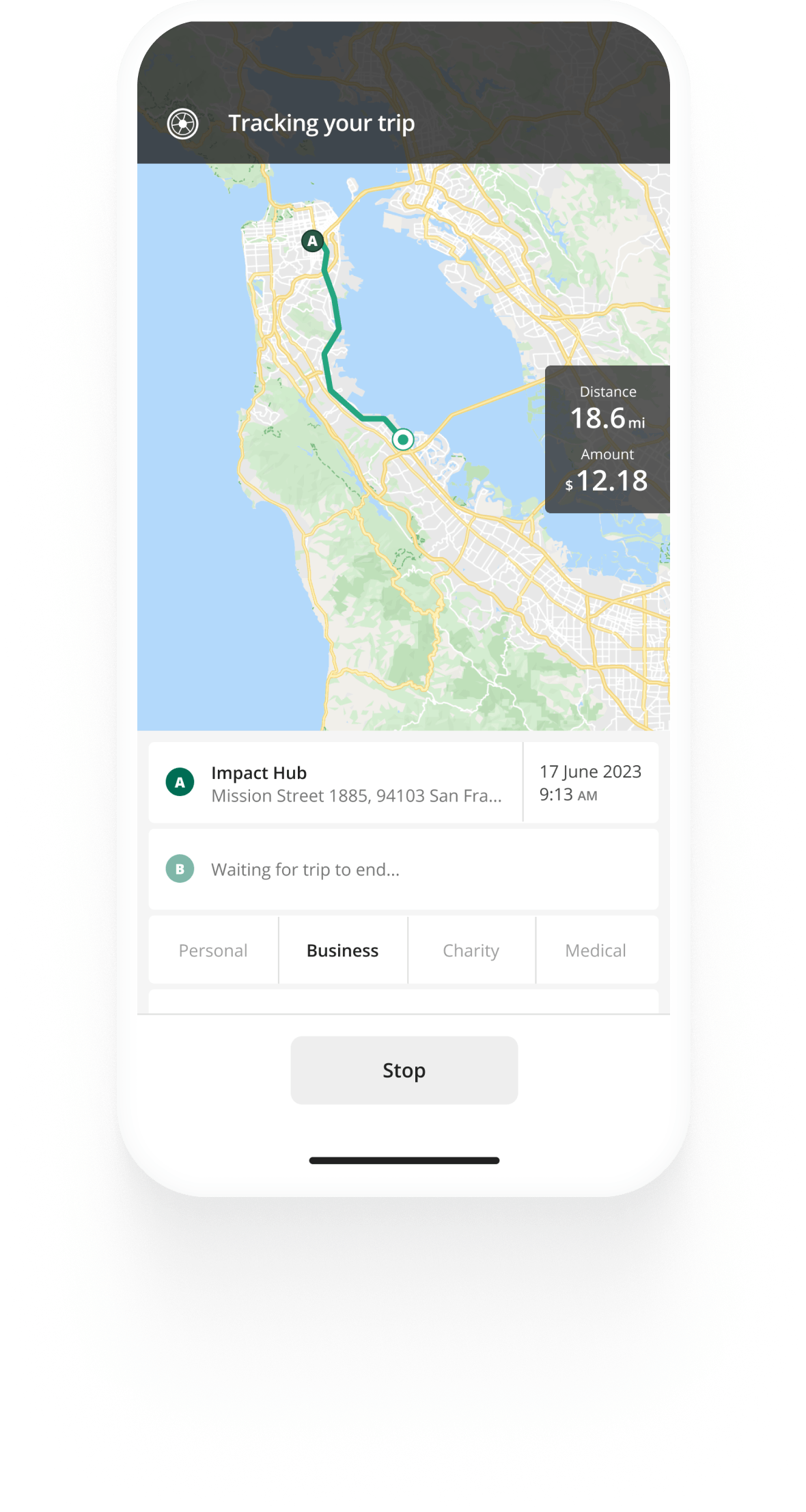Track mileage automatically
Get startedDriving Log
In this article
A driving log is a record of the hours driven under supervision for individuals under 18 who wish to apply for a driver’s license. The number of hours an individual must drive under supervision, and the details they need to record differ from state to state, but there are some commonalities you’ll see in all states. Note that not all states require records of practice hours.
Always have your learner’s permit on you when logging hours.
To find out your state’s specific requirements, contact your local DMV.
What a driving hours log should contain
The following details are required in most US states
- The date of practice
- The amount of driving time
- If the drive is completed during day or night hours
- A signature of the parent, guardian or family member who has been supervising the teen driver during their practice hours.
Other information you may need to fill out in the driving log depending on the state includes:
- Weather and road conditions
- Skills practised
- The supervisor for each practice session
- The time practice starts
Different states require a different amount of driving hours to be completed, but they all require practice both day and night time. The total driving practice can vary between 40 and 60 hours, while 10 to 15 hours are to be done at night.
States that require learners to record road and weather conditions generally have requirements for the conditions a learner must drive in before applying for a driver’s license. Depending on where you live, you may need to drive in the rain, snow, fog and other conditions.
Most DMVs will provide official driving hours logs to the applicants, and will only accept these when submitted.
It is generally recommended that the learner, together with the supervisor, log each practice session soon after it is completed, so the information in the driving hours log is correctly recorded.


Mileage tracking made easy
Trusted by millions of drivers
Automate your logbook Automate your logbook

Automatic mileage tracking and IRS-compliant reporting.
Get started for free Get started for freeSubmit your driving hours log
After a learner has completed the requirements for supervised practice, the supervisor must sign the driving log as confirmation that the recorded information is correct.
When it is time to take the driving test, the learner should bring their driving log with them to the DMV.
Do you drive for work and receive mileage reimbursement? See more about mileage reimbursement rules in our IRS mileage guide.
FAQ

Tired of logging mileage by hand?
Effortless. IRS-compliant. Liberating.
Related posts
IRS Mileage Guide
Latest update: April 24, 2025 - 10 min read
Mileage reimbursement in the US — rates and rules for employees, self-employed and employers in the US.
IRS Mileage
Latest update: December 23, 2024 - 2 min read
Find out what IRS mileage is and how you can claim it. See how much you can claim per mile from the IRS for your business-related driving.
DoorDash Background Check
Latest update: January 29, 2025 - 2 min read
Here’s what to expect when DoorDash conducts background checks, how Checkr works, and why it may take longer to get approved.

